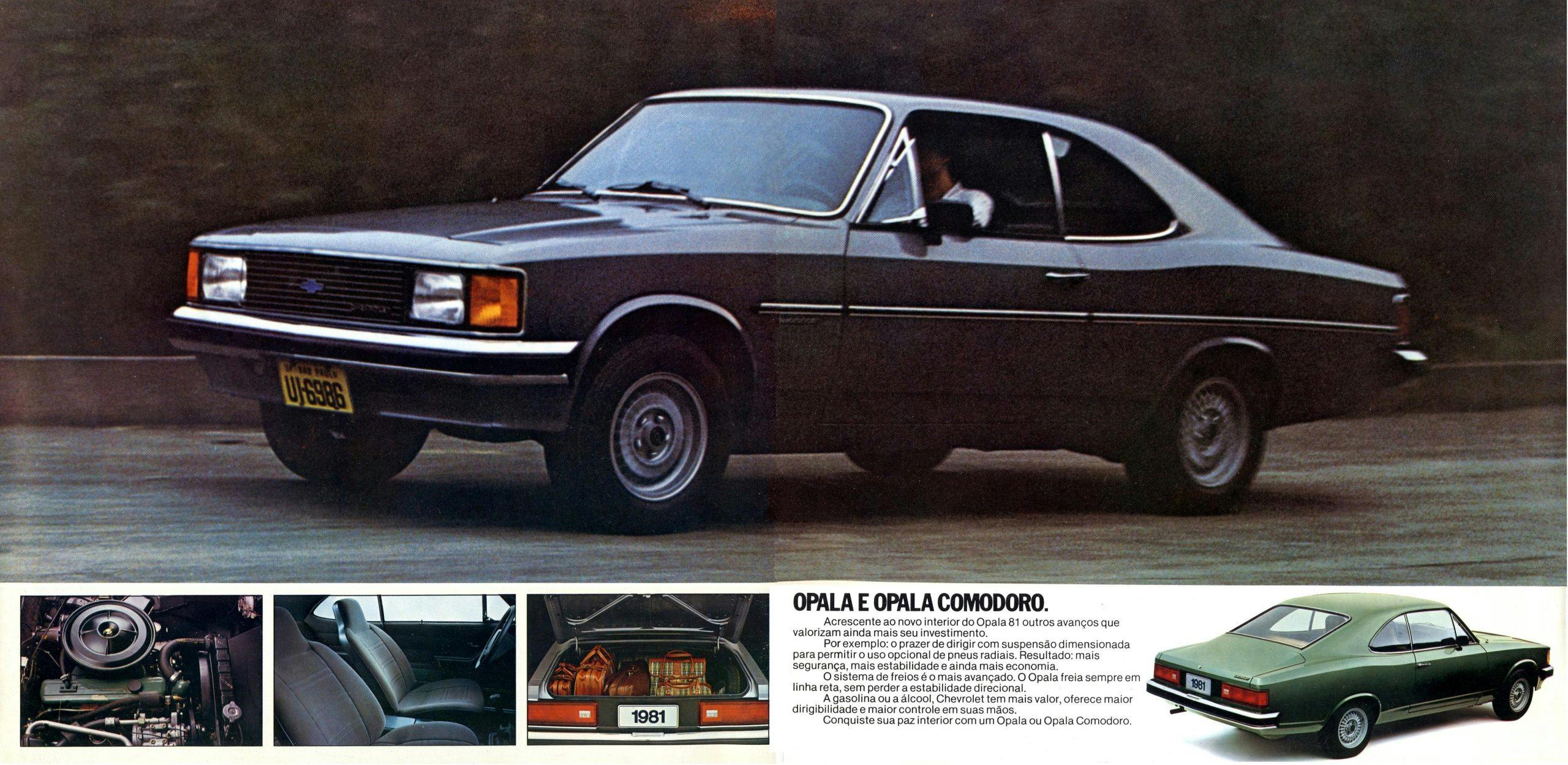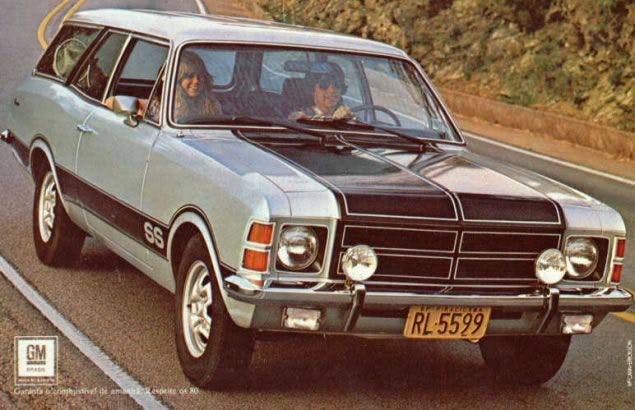Double lives, Part 2: Chevy vs. Ford in South America
Royales with cheese, right? No matter where you go in the world, you’re likely to encounter facsimiles of familiar objects. Maybe it’s as benign as your toothpaste’s brand being represented in another language, or as sublime as a subtle silhouette of sheetmetal. When it comes to the Big Three, we’re used to a certain selection of nameplates; Camaros, ‘Cudas, and Mustangs, of course. But what about Chevrolet’s Marajó, Chrysler’s Centura, or even Ford’s Corcel?
Chevy Opala Caravan
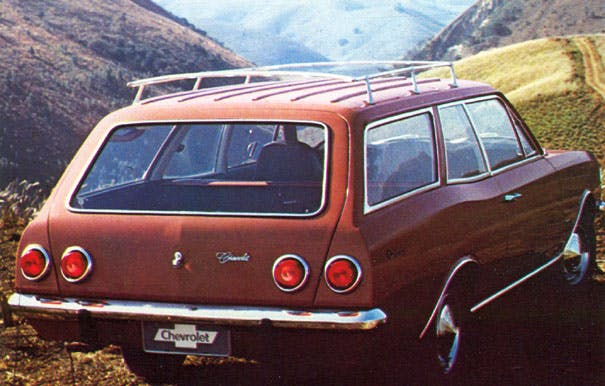
We’ll start the list with the car that lured me into this rabbit hole: the Chevrolet Opala Caravan, a sleek shooting brake offered only in South America. Chevrolet had begun to take interest in developing products specifically for this market, instead of just simply importing the bones of North American full-sizers like the B-bodies and using Opel’s more compact platforms. By fall of November 1968, the codenamed “Project 676” was revealed at the São Paulo International Motor Show. Based upon Opel’s V-body cars, GM gave the South American Chevy Opala unique sheet metal to differentiate it from the German Opel, while raiding Chevrolet’s North American lineup of four- and six-cylinders for motive power. The body was updated in 1979 with a modernized treatment to the front and rear, most notably fitting square, flush-mounted lamps in place of the old-school 7-inch sealed beams.
The name itself was a portmanteau of sorts—big-body Impala cues on the Opel’s platform—but the total package was unique from anything sold in either home country, and it was manufactured exclusively for South America out of GM’s Brazil factory. Chevrolet offered an array of body styles for the Opala, including a traditional sedan and a pillar-less coupe (pictured airborne in the topmost image), but it’s this slick two-door Caravan that caught our eye—especially the refreshed 1980–1992 models.
Chevy Chevette
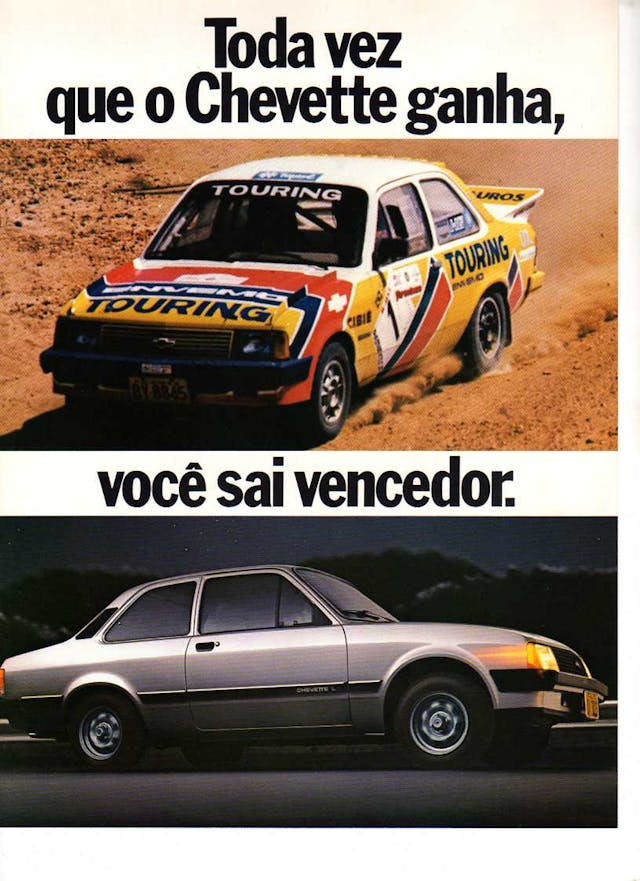
The Chevette had a bit of a checkered past in the United States, but for South America, the small, rear-drive family of sedans, wagon—and eventually—the little ute/pick-up sold well. South America’s own Brazilian-built fleets soon proliferated. Under the hood, these Chevettes had a unique overhead-cam version of the Isuzu-based 1.4-liter and the 1.6 that would eventually supersede it, with various configurations for burning gas or even ethanol, which remains a common fuel in South America. Eventually, tax laws would shift to favor sub-1.0-liter engines, and Chevrolet of Brazil followed suit with a little 998cc version of the Isuzu mill.
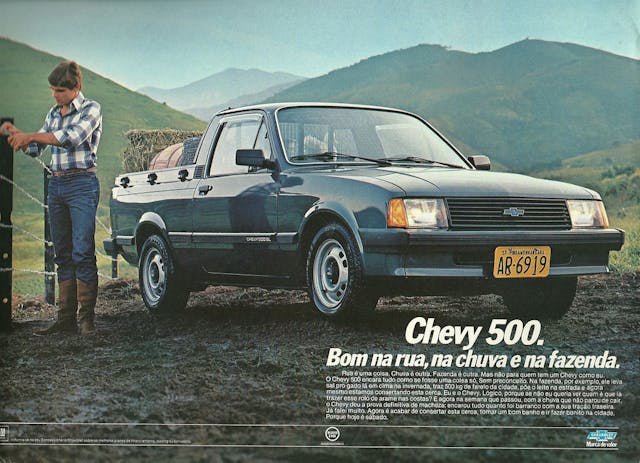
Chevettes had a modest career in touring car and rally racing, thanks to their low cost and low weight, and today they are even seen as foundational platforms for drifting. Around 1.6 million Chevettes were built between 1973 and 1994, with the ute being the lone survivor for the final six years of production after the 1994 arrival of the Opel-based Corsa, a much smaller, front-drive hatchback. Perhaps the pickup endured as long as did because the Corsa wasn’t built for utility.
It goes without saying, but, I want one in the worst way. Imagine this with a modern TDI or EcoTec under the hood, maybe paired with a new TKX five-speed.
Ford Corcel
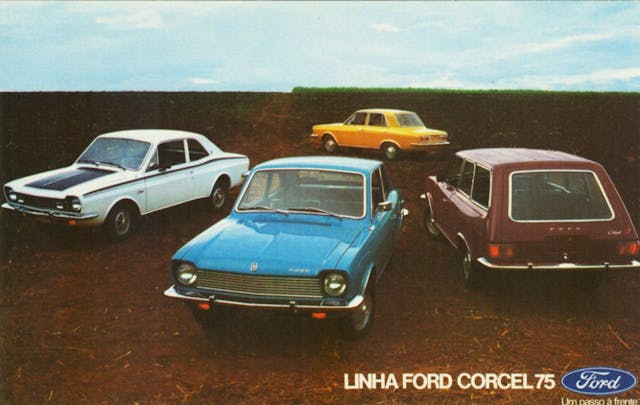
Like many of South America’s earlier automobiles, the roots of the Corcel sprouted from a complicated family tree. Originally, Willys-Overland (then owned by Kaiser) had begun work to import a special version of the Renault 12, which was due to be introduced at the 1969 Paris Auto Show as a replacement in France for the rear-engined Renault 8/10. Willys’ objective was to give its Brazilian counterparts a chance to re-tool the Renault platform for the challenging South American terrain, complete with a unique vision for styling that pulled from both Western Europe and the United States. Looking at the Corcel, a keen eye can spot elements of the Falcon and Escort, especially. Ford essentially took over Willys-Overland in 1967 and assumed control of the project, and the Corcel was, oddly, released for production a year before the French-built Renault version. Sales grew quickly, with 50,000 units moving by the end of its first year of production in 1969 and totaling 1.3 million by the end of of 1986.
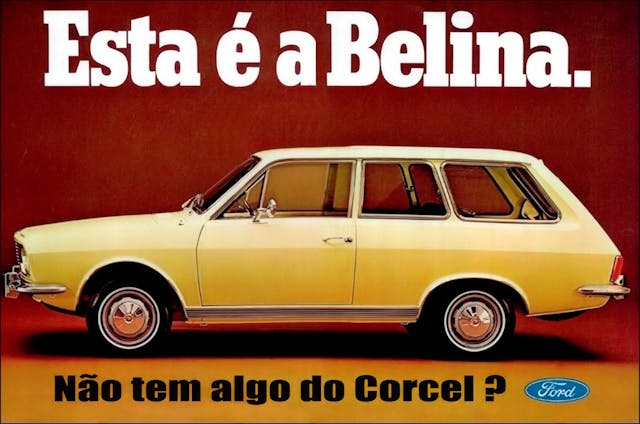
The Corcel proudly broke the mold with its then-novel front-wheel-drive layout, chiding the Chevrolet Chevette’s solid rear axle in period advertising. And unlike the air-cooled Volkswagen Beetles being sold at the time, Ford celebrated a “lifetime” liquid cooling system—years before BMW’s warranty department was filled with burnt transmissions and sludged motors full of “lifetime” fluids. The longitudinally-mounted Renault 1.3-liter four-cylinder had nearly 70 hp and only 2050 pounds to move around, and its suspension soaked up dirt roads thanks to ample travel.

By 1973, the Mk. 3 Ford Escort’s 75-hp 1370cc motor replaced the Renault powerplant, albeit a slightly bored-out version packing 85 hp in XP trim. Before too long, Ford of Brazil dropped the Renault motor altogether for its own 1.4-liter mill. Naturally, the Corcel also found a home in rally racing, thanks to the engine’s weight on the nose giving the vehicle solid traction and stability compared to more powerful, rear-drive competitors.
Much of the Corcel’s success came via the many novel innovations specifically for Brazil, which had built its car culture on hand-me-down rear-drive cars.
Ford Verona

As the Corcel ran its course, Ford sought to replace it with another front-drive vehicle. For 1989, the Blue Oval tapped the Euro-market Orion and molded it for the South American market. “Ford’s new passion” came from its replacement for the Mk. 2 Ford Escort. While it did share a basic drivetrain layout with the outgoing Corcel, the Verona much more closely resembled what we’d today consider a modern, front-drive compact car: transverse motor, MacPherson struts, and a complete unibody with floating subframes. More importantly, the Verona featured the flush-mounted glass and lighting that Ford had begun to implement in its chase for better aerodynamics and fuel efficiency. This move largely eliminated the thick rubber gaskets around fixed pieces of glass, such as the windshield and side glass, while door glass was set as flush to the sheet metal as possible.

Before entering the market, Ford of Brazil wanted to first tweak the Orion, aiming squarely at the Opel Ascona-based Chevrolet Monza (successor to the Chevette), which itself was based on GM’s familiar J-car (shared with the Cavalier). The Verona received unique sheet metal, flared fenders, and chiseled body lines, but with a budget of just $100 million, apparent changes were modest when the Verona and Orion were parked side-by-side. Nevertheless, the little coupe sold well with its initial Renault-based 1.6-liter engine, one not far removed from that of the Corcel, though Ford eventually upgraded to a 1.8-liter VW mill with just over 100 hp.

Instead of broadening the model lineup with different body styles beyond an economy-minded sedan and coupe, Ford instead gave VW the reins for a premium trim of the second-generation Verona. The Volkswagen Apollo, which lent its name from the original codename for the Ford Orion’s development, offered shorter gear ratios and a firmer suspension. VW was even gracious enough to paint the bumpers on the Apollo, unlike the Verona’s more budget-minded, city-parking customer base.
The key factor underlying this tie-up here was a short-lived venture between VW and Ford, known as AutoLatina. The joint company, founded in 1987 and scrapped by 1995, was comprised of Ford and VW’s long-standing network of South American factories, which would start to work in concert to stamp out the new front-drivers. As both companies fought for market share amid difficult economic realities in the late 1980s, the partnership was a favorable compromise for both automakers.
Like the Verona and Apollo, however, AutoLatina’s lifespan was brief. The globalized portfolio template set in place by Japanese automakers had begun to take root, with exports designed from the ground up like a LEGO kit with interchangeable parts for various market demands, but often sharing the same core chassis and drivetrain. The quality of these products and their competitive pricing ultimately squeezed out the hyper-local products like the Verona.


